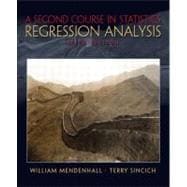
Note: Supplemental materials are not guaranteed with Rental or Used book purchases.
Purchase Benefits
What is included with this book?
Case Studies 13. Modeling the Sale Prices of Residential Properties in Four Neighborhoods.
14. An Analysis of Rain Levels in California.
15. Reluctance to Transmit Bad News: The MUM Effect.
16. An Investigation of Factors Affecting the Sale Price of Condominium Units Sold at Public Auction.
17. Modeling Daily Peak Electricity Demands.
Appendix A: The Mechanics of a Multiple Regression Analysis.
Appendix B: A Procedure for Inverting a Matrix.
Appendix C: Statistical Tables.
Appendix D: SAS for Windows Tutorial.
Appendix E: SPSS for Windows Tutorial.
Appendix F: MINITAB for Windows Tutorial.
Appendix G: Sealed Bid Data for Fixed and Competitive Highway Construction Contracts.
Appendix H: Real Estate Appraisals and Sales Data for Six Neighborhoods in Tampa, Florida.
Appendix I: Condominium Sales Data.
Answers to Odd-Numbered Exercises.
Index.
The New copy of this book will include any supplemental materials advertised. Please check the title of the book to determine if it should include any access cards, study guides, lab manuals, CDs, etc.
The Used, Rental and eBook copies of this book are not guaranteed to include any supplemental materials. Typically, only the book itself is included. This is true even if the title states it includes any access cards, study guides, lab manuals, CDs, etc.